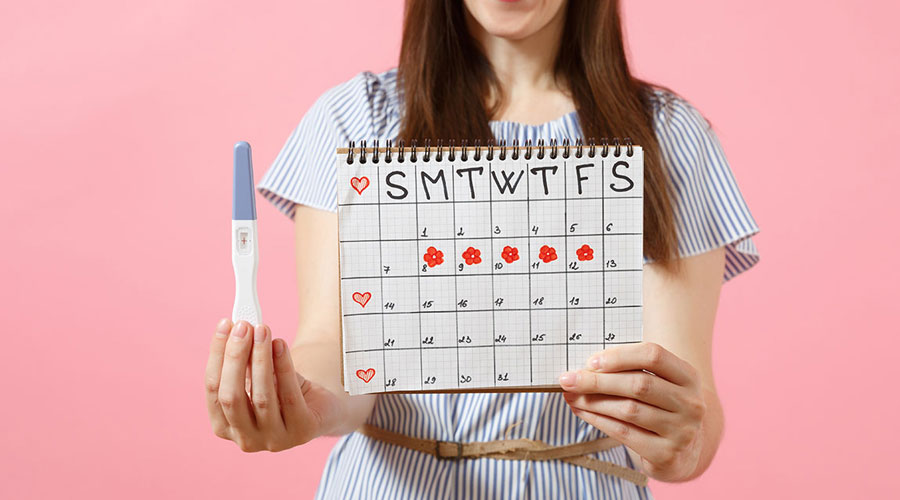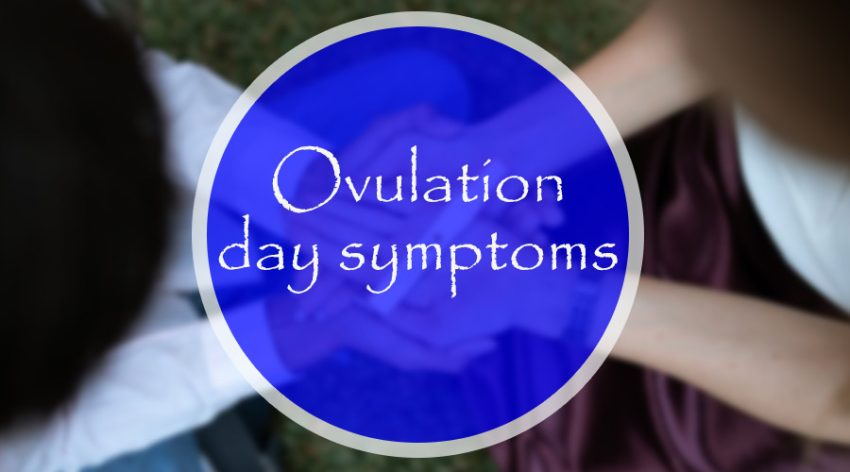When you are trying to get pregnant, it is important to be aware of ovulation day symptoms. These symptoms can include changes in your basal body temperature, changes in your cervical mucus, and changes in your physical appearance. Knowing when you are most fertile can help you increase your chances of getting pregnant. In this blog post, we’ll help you learn what to look out dianabol for sale for when it’s
Table of Contents
What is ovulation?
Ovulation is the process that releases an egg from one of the ovaries. The egg then moves through the fallopian tubes to the uterus. If fertilized by a sperm, the egg implants in the lining of the uterus, and pregnancy begins.

Most women have about 28-day menstrual cycles. This means ovulation occurs around day 14. But it can happen anytime from day 10 to day 20. Polycystic ovary syndrome (PCOS) is a condition in women that causes their bodies to produce higher levels of androgen, a male hormone. Due to the higher levels of androgen, your body faces a hormonal imbalance, which can delay PCOS irregular ovulation or in some cases, completely stop it.
Some women have very clear symptoms when they ovulate. Others don’t notice any changes at all. The most common ovulation symptom is a change in cervical mucus. When you’re close to ovulating, your mucus will become thin and slippery. After the ovulation period, your egg lives in the fallopian tube for a while. It moves through the tube and into the uterus. If it meets with a sperm, it will attach to the lining of the uterus and begin to grow into an embryo.
Common signs of ovulation

There are many common ovulation signs. Women may feel ovulation happening in their cervical mucus, including an increase in its amount and a change in its appearance. Many women also experience a change in their basal body temperature, which is the temperature of the body when it is at rest.
Ovulation occurring causes slight cramping or pain in the lower abdomen. Some women may also notice a change in their mood or energy level around the time of ovulation. When a woman ovulates, her body releases a mature egg from the ovary. If a sperm meets this egg, it will fertilize it. Then the embryo begins to grow in the uterus.
Fertile cervical mucus

Fertile cervical mucus (FCM) is a key sign that you are ovulating. FCM is produced when your body is preparing to release an egg. It helps the sperm move through the cervix and uterus to the egg. When you have fertile cervical mucus, it will be clear, slippery, and stretchy. You may also notice an increase in discharge.
Breast tenderness
Many women experience breast tenderness as one of the ovulation day symptoms. The pain can be located in one spot or it can be spread out evenly over both breasts. The discomfort may also increase as the day goes on. While the cause of breast tenderness is not completely understood, it is believed to be related to hormone changes that occur during ovulation.
Some women find that using a heating pad or taking ibuprofen can help relieve the pain. Spotting during this stage is a natural part of the menstrual cycle. It is caused by the release of an egg from the ovary and it can happen anywhere on the body where there are blood vessels.
Ovulation pain
Ovulation pain, also known as mittelschmerz, is a common ovulation symptom. It’s usually described as a sharp pain or cramp in the lower abdomen that occurs when the egg is released from the ovary. The pain can last anywhere from a few minutes to a few hours.

Most women experience ovulation pain at some point in their lives, but it’s not always a sign that something is wrong. In fact, for most women, ovulation pain is nothing to worry about. However, if you’re experiencing severe or persistent pain, it’s best to talk to your doctor.
The consistency of cervical mucus typically varies over the menstrual cycle, but it can also change temporarily when a woman is about to ovulate. The changes are typically dramatic and can make sexual activity uncomfortable.
Increased sexual desire
Ovulation day is the time in your menstrual cycle when your ovary releases an egg. Most women have 14 days of fertile days during their cycle, and ovulation day is typically around day 12. Many women experience changes in their mood, energy level, and libido during ovulation.
Some women feel more energetic and upbeat on ovulation day, while others feel more emotional or irritable. Some women also experience a boost in their sex drive on ovulation day. This is due to the increase in estrogen that occurs during this time of the cycle.
If you are trying to get pregnant, it’s important to be aware of these symptoms and track your cycle so that you know when you are most likely to be fertile. A woman’s ovulation day is the best way to determine when she will be most fertile.
Doing so can help you increase your chances of getting pregnant while reducing the chance of having an accidental pregnancy.
Saliva ferning pattern
Saliva ferning is said to be an ovulation symptom. Some people believe that if you can see a pattern in your saliva, then you’re about to ovulate. The most common pattern is that the saliva appears to have fern-like branches when it dries.

There is some debate over whether or not saliva ferning is actually an accurate way to predict ovulation. It’s said that the best time to test for ferning patterns is in the morning when your saliva is thickest. Anovulatory bleeding (also called a missed period) occurs when a woman does not have her usual menstrual cycle. It is usually the result of hormonal problems.
Positive ovulation test result
If you’re trying to conceive, you may be keeping a close eye on your ovulation symptoms. These can include changes in cervical mucus, a rise in basal body temperature, and ovulation pain. But what if you get a positive ovulation test result?
A positive ovulation test result usually means that you’re about to ovulate. This is the time of the month when you’re most likely to get pregnant. So if you’re trying to conceive, it’s important to have sex during this time.
Some women get a positive ovulation test result even before they start seeing any other symptoms of ovulation. So if you use an over-the-counter ovulation predictor kits (OPK), and the test shows that your Luteinizing hormone (LH) level is high, it’s probably time to start having sex.
Change in cervical position
Are you tracking your ovulation symptoms? Keep an eye on your cervical position. Your cervix can change position throughout your menstrual cycle. Here’s what you need to know about the different cervical positions:
Your cervix is in the posterior position when it’s located up against your back. This is typically how your cervix looks during the first half of your menstrual cycle.

As you approach ovulation, your cervix moves to the anterior position. This means that it’s located more towards the front of your body. The anterior position is associated with fertility, so if you’re trying to get pregnant, keep an eye on this change.
Some women experience a softening of their cervix as they move closer to ovulation. You may also notice a discharge called fertile mucus, which helps sperm travel through the reproductive system.
Basal body temperature increase
The basal body temperature increase is one of the ovulation day symptoms. In order to track your basal body temperature, you will need to take your temperature every morning before getting out of bed. You will also need to use a basal body temperature thermometer, which is specifically designed to track your basal body temperature.
BBT charting is also inefficient for women who have even slightly irregular periods.
Once you have been taking your basal body temperature for a while, you will start to see a pattern in your readings. Your basal body temperature will be lower during the first half of your cycle, and it will increase slightly right before ovulation. By tracking your basal body temperature, you can determine when you are most fertile and likely to conceive.
When do you ovulate?
Ovulation is the process of an egg being released from an ovary. Most women ovulate approximately 14 days before their next period.
There are many ovulation day symptoms that can indicate when you are ovulating. These include changes in body temperature, cervical mucus, and feelings of fatigue or energy. It is important to track your symptoms over a few cycles to get an idea of when you ovulate.
If you are trying to conceive, to calculate ovulation is important so that you can time intercourse correctly. If you are not trying to conceive, tracking your ovulation can help you avoid pregnancy as well as take birth control.
How long does ovulation last?

The ovulation process typically lasts for around 24 hours. However, there is significant variation among women in terms of both the length of ovulation and the amount of time between ovulation. Some women experience just a 12-hour ovulatory period, while others may ovulate for up to 48 hours.
The time between ovulation can also vary, with some women having a two-day luteal phase and others having a three- or four-day luteal phase. Take note of when your period begins and ends and know how long your cycle lasts.
Derivation
In conclusion, ovulation day symptoms can vary from woman to woman. Some common symptoms include abdominal pain, bloating, and mood swings. If you are trying to get pregnant, it is important to be aware of these symptoms and track them over time so you can better understand your body and time your sexual intercourse. If you are not trying to get pregnant, tracking your ovulation day symptoms can help you know when you are most likely to get pregnant. Thanks for reading!
FAQ
Do you get ovulation symptoms if you have conceived?
Some women do experience symptoms in the days leading up to ovulation, but not all women do. Ovulation symptoms can vary from woman to woman and even from cycle to cycle. Some of the most common ovulation symptoms include changes in cervical mucus, changes in basal body temperature, and changes in mood or energy levels.
If you are trying to get pregnant, it can be helpful to track your ovulation symptoms so that you know when you are most fertile. However, if you have already conceived, tracking ovulation symptoms may not be as important. Many early pregnancy symptoms are similar to ovulation symptoms, so it can be difficult to tell the difference. If you are experiencing any of the following early pregnancy symptoms, there is a good chance that you are pregnant: nausea, fatigue, bloating, and frequent urination.
What are the signs of successful ovulation?
There are many symptoms associated with ovulation, but not all women experience them. Some common signs of successful ovulation include:
- Spotting. Some women experience a small amount of spotting around the time of ovulation.
- Increased libido. Many women feel more sexual around the time of ovulation.
- Changes in cervical mucus. The consistency and appearance of cervical mucus change throughout a woman’s menstrual cycle, and it is often most fertile just before ovulation.
- Increased basal body temperature. Your basal body temperature (the temperature measured when you’re fully at rest) may rise slightly during ovulation.
How soon during ovulation do you conceive?
Are you trying to conceive? If so, you may be wondering how soon during ovulation you can conceive. Ovulation typically occurs 14 days before the start of your next period, but it can vary from woman to woman. Symptoms of ovulation include cramping, spotting, and increased cervical mucus. To increase your chances of conception, have sex in the days leading up to ovulation and on the day of ovulation. If you’re not sure when you’re ovulating, use an ovulation predictor kit (OPK) to help you track your fertility.
How can you tell if you are ovulating?
There is no one definitive way to know when you are ovulating, but there are some clues that can give you a good idea. One of the most common ovulation symptoms is a change in your cervical mucus. When you are about to ovulate, your mucus will become thinner and more slippery, making it easier for sperm to travel to the egg. Some women also experience a slight increase in body temperature around the time of ovulation.
You can track your basal body temperature (your lowest body temperature measured first thing in the morning) over several months to see if there is a pattern that corresponds with ovulation. Other possible ovulation symptoms include breast tenderness, mood swings, and fatigue. If you are trying to get pregnant, tracking your ovulation symptoms can help you figure out when is the best time to have sex.
How do you know when ovulation is over?
There is no definitive answer to this question. Each woman’s body is different and will experience ovulation differently. However, there are some general symptoms that may indicate that ovulation is over. One common sign is the end of the fertile window. During ovulation, the cervical mucus changes and becomes thinner and more slippery. Once ovulation is over, the mucus will become thicker again.
Another symptom may be a change in basal body temperature. After ovulation, the body’s temperature will rise by about 0.5 degrees Fahrenheit. Finally, some women may experience a change in their mood or libido after ovulation has occurred. If any of these symptoms occur, it may be an indication that ovulation is finished for the month.

